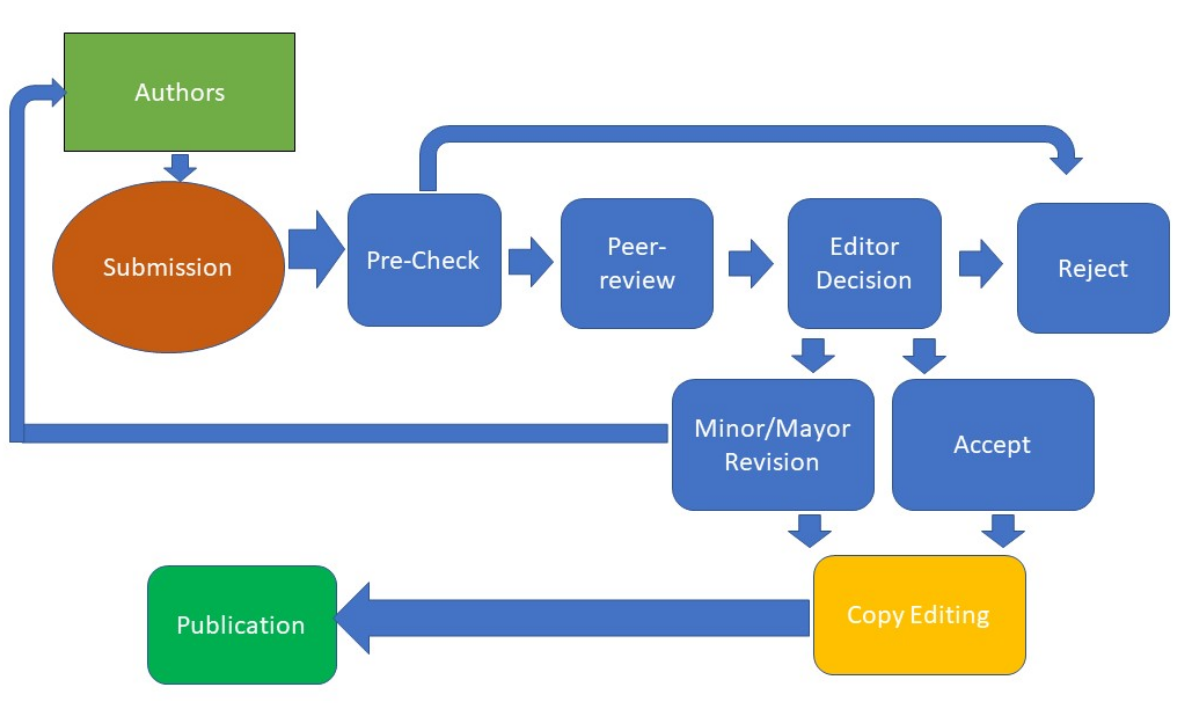PEER REVIEW PROCESS
General rules:
- The journal adopts a double-blind review process. Both authors and reviewers will be given no access to identify of the reviewers (for authors) or authors (for reviewers). The editor will remove all information of authors and affiliation from the manuscript prior to peer review process.
- Articles will be assessed by reviewer(s) who have relevant expertise and field of research with manuscript
- The final decision (acceptance or rejection) will be determined by the editorial boards considering the results of reviews
- There are no correspondences between authors and editors regarding the manuscript rejection. Review results and reason for rejection will be informed to authors.
Peer Review Process:
The journal follows a rigorous peer review process. The process can be outlined as follows:
- Manuscript Submission: Authors submit their research manuscript to the journal for review.
- Assignment of Section Editor: The editor in chief appoints a section editor who will oversee the manuscript throughout the review process. The section editor is typically an expert in the field relevant to the submitted manuscript.
- Initial Check: The section editor conducts an initial evaluation of the manuscript to ensure it meets the minimum criteria established by the journal. This assessment includes checking if the topic aligns with the journal's scope, confirming word length adherence, verifying the absence of plagiarism, assessing references, evaluating formatting and language quality, among other relevant criteria.
- Reviewer Assignment: If the manuscript meets the minimum criteria, the section editor selects a minimum of two reviewers who possess expertise in the subject matter addressed by the manuscript. These reviewers should have a background in the specific research area to provide insightful feedback and assessments.
- Reviewer Reports: The assigned reviewers thoroughly examine the manuscript, assessing its quality, originality, methodology, and conclusions. They provide detailed reports with comments, recommendations, and concerns to the section editor.
- Notification to Authors: The section editor communicates the review results to the authors, sharing the feedback received from the reviewers. This includes the comments, recommendations, and concerns expressed by the reviewers.
- Revision: If revisions are deemed necessary, the authors are provided with a specified timeline to make the required changes and submit a revised version of the manuscript.
- Re-review (Optional): The section editor may choose to have the revised manuscript re-evaluated by the same reviewers or seek input from different reviewers. This step ensures that the authors have adequately addressed the concerns raised in the initial review.
- Final Decision: Based on the reviewers' feedback and the revised manuscript, the editor in chief makes the final decision regarding the manuscript.
- Production Processes: If the manuscript is accepted, it moves to the production processes, which involve formatting, proofreading, and preparing the manuscript for publication.
It is important to note that there are no direct correspondences between the authors and editors regarding manuscript rejections. Instead, authors receive information about the review results and the reasons for rejection, if applicable. The final decision on acceptance or rejection is made by the editorial boards, taking into consideration the reviewers' assessments and recommendations. This comprehensive peer review process ensures the quality, validity, and integrity of the published research in the journal.
Final decisions:
- Accept Submission: The manuscript is accepted without the need for any further revisions.
- Revision Required: The manuscript is accepted with minor changes or revisions based on the reviewers' comments.
- Resubmit for Review: Significant changes are required in the manuscript, and a second round of reviews is necessary before a possible acceptance.
- Decline Submission: The submitted manuscript will not be published in the journal.
Here you may find a sample model of the open peer review process in Jurnal Geografi, Edukasi dan Lingkungan (JGEL):
